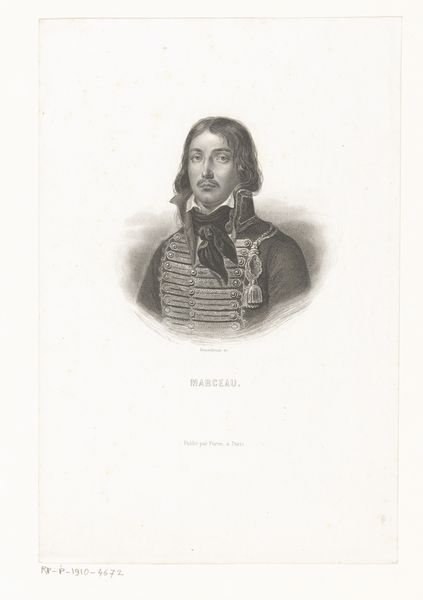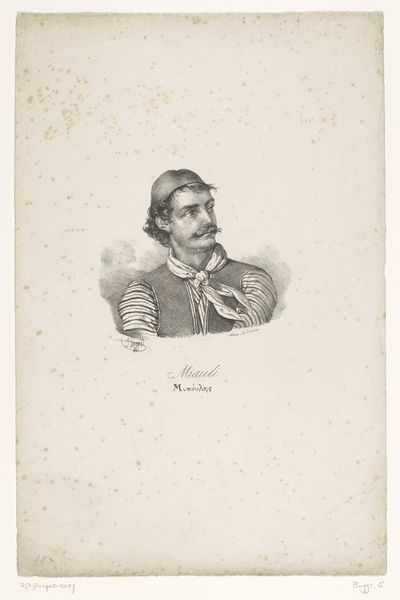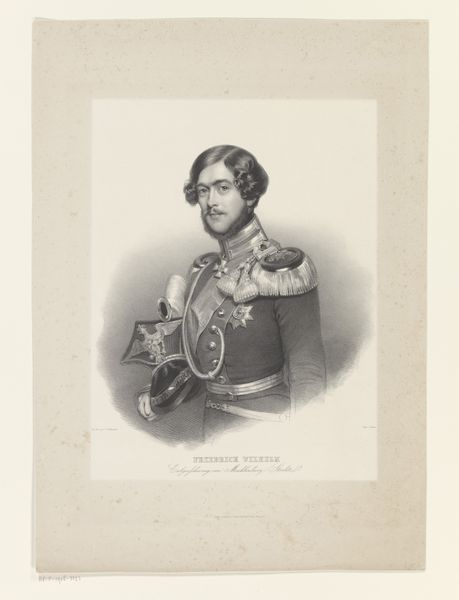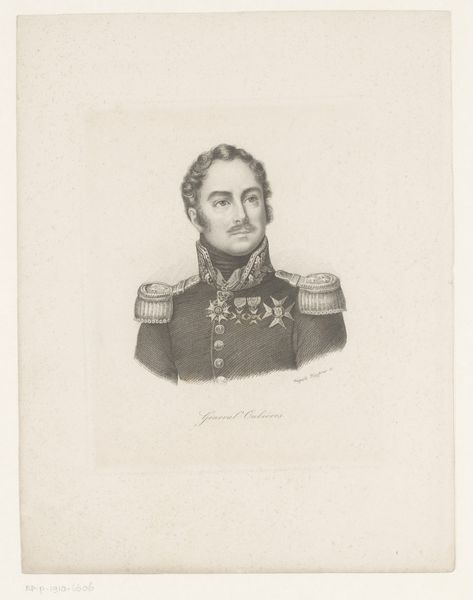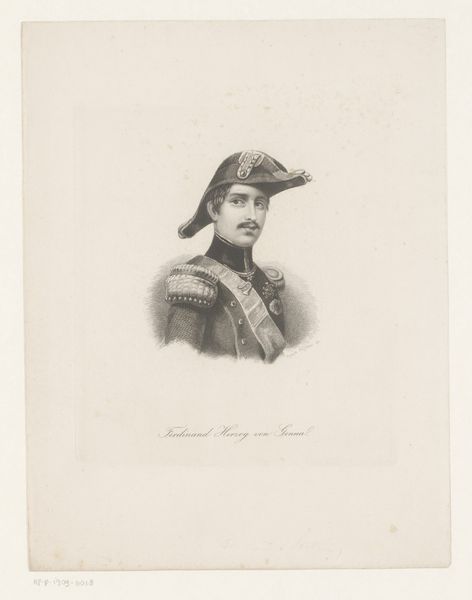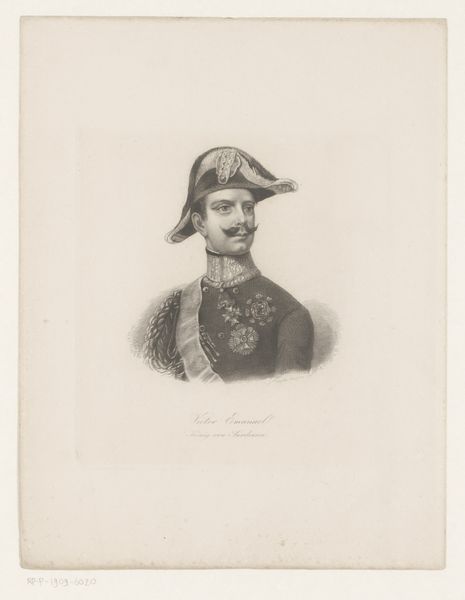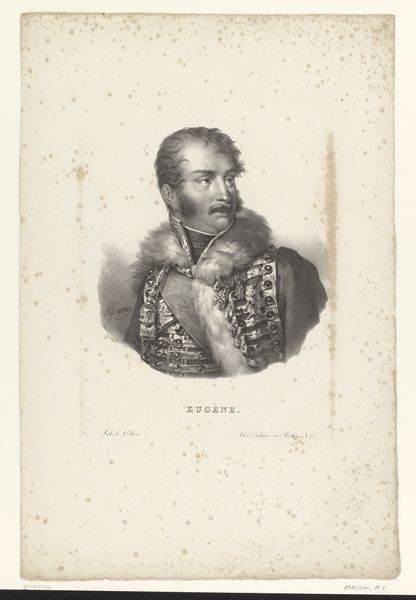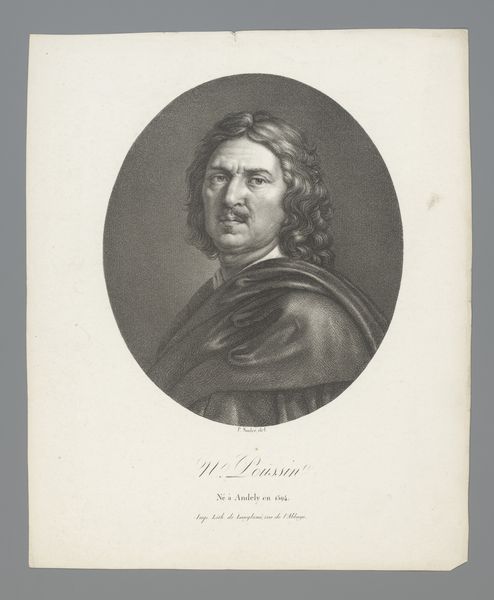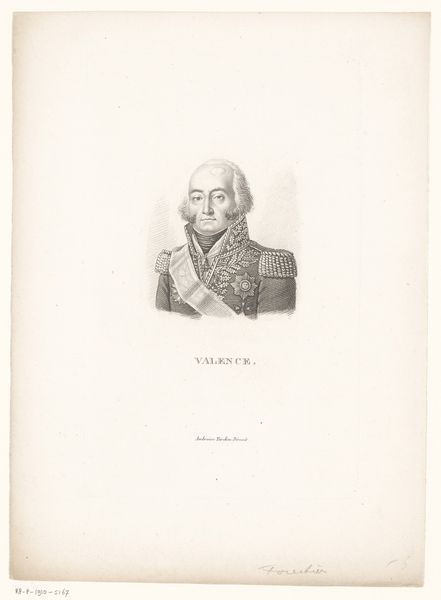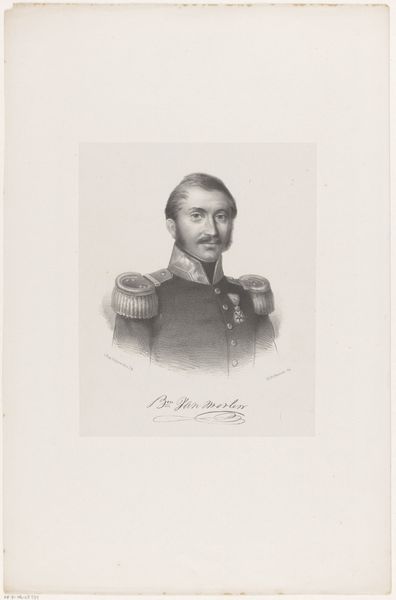
drawing, pencil, engraving
#
portrait
#
pencil drawn
#
drawing
#
neoclacissism
#
light pencil work
#
pencil sketch
#
pencil drawing
#
pencil
#
academic-art
#
engraving
Dimensions: height 462 mm, width 317 mm
Copyright: Rijks Museum: Open Domain
Curator: Henri Grevedon’s “Portret van François Séverin Marceau” from 1823 captures its subject with incredible detail using pencil and engraving. The overall impact is quite striking. Editor: It certainly grabs attention. The sharpness of the lines describing Marceau’s military jacket against the relative softness of his face creates an interesting contrast. You can almost feel the texture of the fabric, but it seems a little…idealized. Curator: It's a Neoclassical portrait. Grevedon seeks to convey not just likeness, but also Marceau’s position in society and, by extension, the socio-political narratives around power and masculinity at the time. The idealized aspect speaks directly to the conventions and aspirations embedded within those societal structures. Editor: Right, and considering the production methods, engraving as a process of reproduction inherently links it to the dispersal of such narratives, disseminating specific representations and, thereby, solidifying notions of identity through visual culture. Curator: Precisely. The subject, Marceau, a general during the French Revolution, is himself deeply embedded in political events of his time. Consider the portrait within a broader context: France in the early 19th century attempting to negotiate revolutionary and monarchical pasts to envision a new social contract. The artwork then functions as a visual text in those cultural debates. Editor: It brings to mind questions regarding the economics of portraiture at that time. Who commissioned this, and what were their intentions? The cost of labor and materials to create such an item tells us who was included, or more accurately, excluded from representation. Curator: Absolutely, and this prompts reflection on whose stories are valued and preserved, both in history and art history, highlighting gender imbalances and socio-economic divides. Editor: Viewing the labor invested gives you a real sense of the subject's value in a particular context, and also the effort involved in shaping our understanding. Curator: Ultimately, studying art provides a means of understanding shifting cultural values and their manifestations through identity, gender and representation. Editor: Yes, and appreciating the work put in makes us conscious about what it takes to portray a certain identity and also what doesn't get portrayed.
Comments
No comments
Be the first to comment and join the conversation on the ultimate creative platform.
